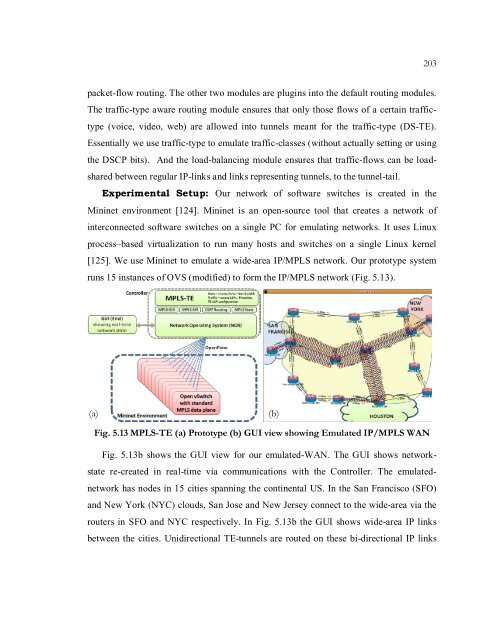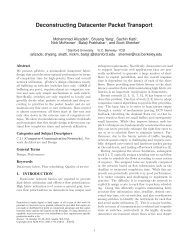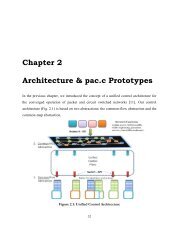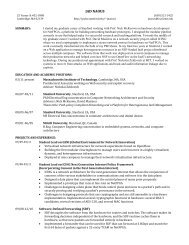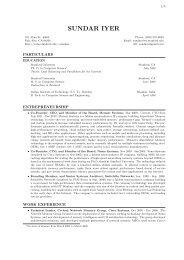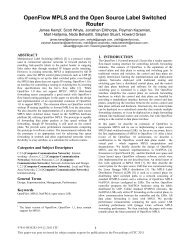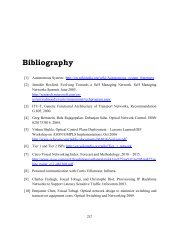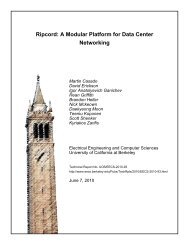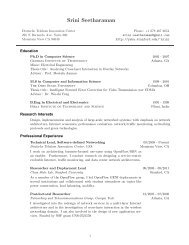Chapter 5 Introducing SDN Control in MPLS Networks - High ...
Chapter 5 Introducing SDN Control in MPLS Networks - High ...
Chapter 5 Introducing SDN Control in MPLS Networks - High ...
You also want an ePaper? Increase the reach of your titles
YUMPU automatically turns print PDFs into web optimized ePapers that Google loves.
203packet-flow rout<strong>in</strong>g. The other two modules are plug<strong>in</strong>s <strong>in</strong>to the default rout<strong>in</strong>g modules.The traffic-type aware rout<strong>in</strong>g module ensures that only those flows of a certa<strong>in</strong> traffictype(voice, video, web) are allowed <strong>in</strong>to tunnels meant for the traffic-type (DS-TE).Essentially we use traffic-type to emulate traffic-classes (without actually sett<strong>in</strong>g or us<strong>in</strong>gthe DSCP bits). And the load-balanc<strong>in</strong>g module ensures that traffic-flows can be loadsharedbetween regular IP-l<strong>in</strong>ks and l<strong>in</strong>ks represent<strong>in</strong>g tunnels, to the tunnel-tail.Experimental Setup: Our network of software switches is created <strong>in</strong> theM<strong>in</strong><strong>in</strong>et environment [124]. M<strong>in</strong><strong>in</strong>et is an open-source tool that creates a network of<strong>in</strong>terconnected software switches on a s<strong>in</strong>gle PC for emulat<strong>in</strong>g networks. It uses L<strong>in</strong>uxprocess–based virtualization to run many hosts and switches on a s<strong>in</strong>gle L<strong>in</strong>ux kernel[125]. We use M<strong>in</strong><strong>in</strong>et to emulate a wide-area IP/<strong>MPLS</strong> network. Our prototype systemruns 15 <strong>in</strong>stances of OVS (modified) to form the IP/<strong>MPLS</strong> network (Fig. 5.13).(a)(b)Fig. 5.13 <strong>MPLS</strong>-TE (a) Prototype (b) GUI view show<strong>in</strong>g Emulated IP/<strong>MPLS</strong> WANFig. 5.13b shows the GUI view for our emulated-WAN. The GUI shows networkstatere-created <strong>in</strong> real-time via communications with the <strong>Control</strong>ler. The emulatednetworkhas nodes <strong>in</strong> 15 cities spann<strong>in</strong>g the cont<strong>in</strong>ental US. In the San Francisco (SFO)and New York (NYC) clouds, San Jose and New Jersey connect to the wide-area via therouters <strong>in</strong> SFO and NYC respectively. In Fig. 5.13b the GUI shows wide-area IP l<strong>in</strong>ksbetween the cities. Unidirectional TE-tunnels are routed on these bi-directional IP l<strong>in</strong>ks


